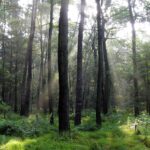In a bold and unprecedented move, eight young Alaskans have taken a stand against their state over the controversial Alaska LNG Project. This lawsuit, filed by residents deeply connected to the region’s land and culture, argues that the project violates their constitutional rights to a clean and healthy environment. This legal battle could set a significant precedent for environmental justice and the protection of indigenous rights in the face of expanding fossil fuel projects.
The Heart of the Issue
The Alaska LNG Project, developed by the Alaska Gasline Development Corporation (AGDC), aims to deliver up to 3.9 billion cubic feet of natural gas per day, primarily for export to international markets. The project is situated near Prudhoe Bay, the largest oil field in North America, on over 200 acres of Alaska’s North Slope. This large-scale fossil fuel initiative has sparked significant concerns regarding its environmental impact and cultural repercussions.
The plaintiffs, led by 22-year-old Summer Sagoonick of the Iñupiaq tribe, contend that the acceleration of climate change caused by this project will irreversibly damage the environment and disrupt their traditional ways of life. “The acceleration of climate change that this project will bring will affect what the land provides and brings to my culture,” Sagoonick stated, emphasizing the deep connection between the Iñupiaq people and their ancestral lands (Earth.Org).
Constitutional Rights at Stake
This lawsuit is not just about environmental protection; it also centers on constitutional rights. The young plaintiffs argue that their right to a healthy environment, as guaranteed by the Alaska State Constitution, is being infringed upon by the state’s approval and promotion of the LNG project. This case brings to light the often-overlooked constitutional dimensions of environmental issues, particularly in the context of indigenous rights and youth activism.
Broader Implications
The outcome of this case could have far-reaching implications for environmental policy and indigenous rights across the United States and beyond. It highlights the increasing role of the judiciary in addressing climate change and the growing trend of youth-led climate activism. This case adds to a series of recent lawsuits where young people have taken legal action against governments and corporations for failing to adequately address climate change.
Moreover, it underscores the importance of recognizing and integrating indigenous knowledge and perspectives in environmental decision-making. The Iñupiaq people have lived in harmony with their environment for centuries, and their insights are crucial for sustainable development and climate resilience.
A Call for Justice and Action
As the climate crisis intensifies, it is vital to support and amplify the voices of those most affected by its impacts. The Alaska LNG lawsuit serves as a powerful reminder of the urgent need to transition away from fossil fuels and toward sustainable, renewable energy sources. It also calls on policymakers, businesses, and communities to uphold environmental justice and protect the rights of future generations.
In conclusion, the young Alaskans’ lawsuit against the Alaska LNG Project is a landmark case that could pave the way for more robust environmental protections and greater recognition of indigenous rights. It is a call to action for all of us to advocate for a healthier, more sustainable planet.
Join the Conversation
What are your thoughts on this case? Do you believe the courts will side with the young plaintiffs? How can we better support indigenous communities in the fight against climate change? Share your comments and join the conversation on our platform.
For more details on this story, visit Earth.org (Earth.Org).
This commentary aims to provide a comprehensive understanding of the critical issues at play in this significant legal battle, highlighting the intersection of environmental justice, indigenous rights, and youth activism.



